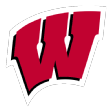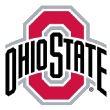DALLAS -- The Cotton Bowl media room had mostly cleared out when Oklahoma defensive coordinator Alex Grinch sat down at the microphone Saturday afternoon.
Grinch was following two head coaches, Oklahoma's Lincoln Riley and Texas' Tom Herman, who had landed opportunities to lead programs before their 40th birthday (in Riley's case, well before). Both Riley and Herman had been high on the next-man-up lists as dynamic young coordinators, a designation Grinch now carries.
Anyone who watched Grinch's defense swarm Texas in Oklahoma's 34-27 win came away impressed with the first-year defensive coordinator. A Sooners defense that hemorrhaged yards and points in 2018, while rarely disrupting the opposition, tied a team record with nine sacks and had 15 tackles for loss.
Anyone who watched Grinch at the podium, however, probably didn't see a defensive coordinator. They saw a head coach. In discussing scheme, players and big-picture philosophy, Grinch projected intelligence, confidence and charisma. To be clear, teams don't hire first-time coaches based on how they handle the media as assistants, but it's part of the evaluation for search firms and athletic directors.
Before the season, I wrote about Grinch as the most important coordinator hire for a playoff contender in years. Halfway through the season, here's a look at Grinch and several other Power 5 defensive coordinators who have seen their head-coaching stock soar.

Alex Grinch, Oklahoma
Grinch proved himself as a tactician long ago. He transformed doormat defenses at Washington State into units that excelled through pressure and takeaways. Despite being co-coordinator for an Ohio State defense that dramatically underachieved in 2018, he seemed like a smart choice for an Oklahoma defense that needed a major shakeup.
Mentality was the buzzword throughout the summer at Oklahoma, mentioned often by Riley, Grinch and Oklahoma players like star linebacker Kenneth Murray. Grinch's streamlined schemes could help, but only if players took the field with a different mindset.
"People talk about culture," Grinch said after the Texas win. "It's the ecosystem, it's everything. It's the air you breathe in that building, at the risk of sounding too dramatic. Since this defensive staff got together in January, it's just been an onslaught on our part to try to instill it. It's a daily conversation amongst coaches and players."
"What coach Grinch has put in front of us is basically giving us more opportunity to be more disruptive," said nose tackle Neville Gallimore, who has three sacks, five tackles for loss and two forced fumbles in the first six games. "Especially in the front seven, you notice more guys are flying around, more guys are making plays. We're not stuck on blocks.
"It's a matter of who wants it more."
Grinch isn't a self-promoter, but he had a presence in public, which matters to people assessing whether a coordinator can take the next step or not. It's particularly important for defensive coordinators, who don't have as many flashy stats to sell and often must overcome the perception that they're dull or boorish.
Grinch is neither. He has been groomed to lead, and probably won't be in Norman long, especially if Oklahoma's defense maintains its trajectory. Would he go to Illinois if the school dismisses Lovie Smith? It might take a surprise vacancy or two, or a domino effect, for something that makes sense (Michigan State, Missouri).

Jim Leonhard, Wisconsin
He calls plays for the nation's most dominant defense, a unit that has four shutouts in six games, leads the FBS in the four major statistical categories and has scored as many touchdowns (4) as it has given up to opponents.
Leonhard's story is truly unique, as the former Wisconsin star and NFL veteran began coaching in only 2016, becoming a coordinator the following year. It's a good bet Leonhard will be Wisconsin's next head coach, but will he wait out Paul Chryst or get outside experience? While an NFL coordinator role is certainly possible after this season, Leonhard will also be on the radar as a college head-coaching candidate. The 36-year-old is smart, confident and charismatic, and has the NFL pedigree that enhances his profile.

Clark Lea, Notre Dame
Industry interest is spiking for Lea, who took over an improving Irish defense from his mentor Mike Elko (now at Texas A&M) and made it better the past two seasons. Despite some inexperience at linebacker, Notre Dame ranks 13th nationally in points allowed (16.8 per game), tied for seventh in takeaways (14) and 17th in net yards per pass attempt (5.52). Lea, 37, is a creative playcaller, but his real appeal is a smart, steady approach to teaching and player development. The former Vanderbilt fullback could be an interesting option if his alma mater needs a coach, and also brings a diverse geographic profile after stops at UCLA, Syracuse and Wake Forest.

Danny Gonzales, Arizona State
He's among the reasons for Arizona State's 5-1 start, as his young defense fueled a Week 3 win at Michigan State and ranks 16th nationally in points allowed (17.7 per game) and 12th against the run (91.7 yards per game). Even when the Sun Devils don't play lockdown defense, like last week against Washington State, they still make a mark (12 pass breakups, ASU's most since 2000).
Gonzales, 43, also has a strong lineage as a former player and longtime assistant for Rocky Long, one of the more underrated defensive head coaches in the past 20 years. He will generate interest with the expected Mountain West vacancies this year, and could aim higher if certain Power 5 jobs surprisingly open.

Jeff Hafley, Ohio State
Despite most of the same players, the Buckeyes' defense is unrecognizable from the unit that last season gave up 67 plays of 20 yards or more, 12 plays of 50 yards or more and seven plays of 70 yards or more. While veteran coordinator Greg Mattison is the more recognizable staff addition, Hafley's work in upgrading the secondary and streamlining the scheme has not gone unnoticed. He strikes me as a defensive version of Ryan Day -- a little-known assistant from the NFL who makes an immediate impact at a premier college program. Hafley, 40, is an engaging personality whom Ohio State doesn't expect to keep for very long. The New Jersey native's previous college experience all occurred in the Northeast, which could benefit him in this cycle.

Brent Pry, Penn State
Penn State probably will have its best defense of the James Franklin era, shining a bigger spotlight on Pry, a Franklin assistant since 2011. The Lions boast arguably the nation's best (and certainly deepest) defensive line, and lead the nation in average yards per rush allowed (1.59), while tying for second in sacks (27) and ranking second in points allowed (8.2 per game). Pry is 49, so this could be his chance to lead a program, given the inherent obstacles for defensive coordinator candidates, especially those 50 and older.
The Pennsylvania native has strong Northeast ties but also has spent time at Vanderbilt, Georgia Southern, Memphis, Louisiana-Lafayette and Western Carolina. If he can't land a Power 5 job this year, a good Group of 5 opportunity could pique his interest.
